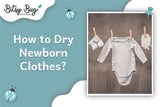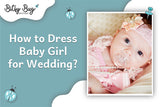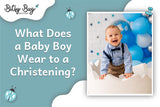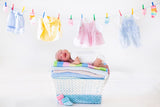How to Fold Baby Clothes
Folding baby clothes can be an overwhelming task for new parents. It can be challenging to keep everything in order and clean when there is an endless supply of baby clothes. However, with a few essential tips on how to fold baby clothes, it can be a simple and successful process with a little patience and practice.
So, in this article, you will learn how to fold clothes better and faster. By the end of this article, you will better understand how to keep your newborn clothes organized and clean without wasting time and nerves.

Source: shutterstock.com / Photo Contributor: Sunflower Light Pro
How to Fold Baby Clothes
Firstly, it is important to note that folding baby clothes differs from folding adult clothes. Baby clothes are usually smaller and more delicate, requiring a gentle touch and a little more care when folding.
Additionally, some newborn baby girl clothes, such as onesies and sleepers, can have more unique features like snaps, zippers, or footies, making them more challenging to fold.
Despite these challenges, folding baby clothes is a simple process that you can master with some practice.
For starters, begin by collecting all baby clothes that need to be folded. To simplify the process, sort them by size or type, such as separating onesies from sleepers.
Next, spread each piece of clothing flat on a clean, dry surface. With your hands, smooth out any wrinkles or creases, and fold carefully so as not to stretch or damage the fabric.
If the clothes have sleeves, tuck the sleeves towards the center of the clothes. Fold the edges of the garment toward the center to form a long, skinny rectangle. And finally, create a compact rectangle by folding the bottom of the clothes up toward the top.
Onesies
-
Collecting the onesies
Gather all your baby onesies in one spot before folding them. This will speed up the folding process and ensure you don’t miss any. Lay the onesies you need to fold on a flat surface, such as a bed or a table.
-
Straightening out the onesie
The first step in folding a baby onesie is to straighten it out. Smooth out any wrinkles or folds in the onesie on a flat surface.
Before you begin folding, make sure the onesie is completely flat.
-
Folding
Begin by folding the sleeves inwards towards the body of the clothes. Fold the bottom of the onesie up towards the top, and create a small rectangle. Fold the onesie’s edges towards the center and then fold it in half again, making it like a small package.

Source: shutterstock.com / Photo Contributor: Africa Studio
Another method
You can also fold onesies using a different method, such as rolling them rather than folding them. You can always experiment with different methods and see which one works best for you.
Additional tips
- Keep a designated drawer or bin to simplify organizing and locating baby clothes
- If you have a lot of sizes of onesies, organize them by size so you can quickly find the right size when you need it
- If you have many onesies to fold, divide them by color to make the task more manageable
Sleepers
-
Laying them flat
Lay the baby sleeper flat on a clean surface like a bed or table. Check that all snaps or zippers are undone and that the sleeper is fully opened.
-
Folding
Begin by folding the arms in towards the sleeper's center. Fold the sleeper in half lengthwise so that the feet meet. Finally, fold the sleeper in half again to form a little square.
Another method
If you need more space, you can roll them up instead of folding and storing them.
Additional tips
- If the sleeper has footies, fold them up first before folding the legs towards the sleeper’s chest
- If the sleeper has a hood, tuck it into the folded sleeper to keep it compact
- You should avoid using hangers because they can stretch the fabric and damage the sleeper's shape
Dresses
-
Preparing
Before folding, make sure that the dress is clean and dry. If it's fully dry, you can use an iron or a steamer to remove wrinkles or creases.
-
Laying the dress
Place the dress flat on a clean surface like a bed or a table. With your hands, smooth out any creases.
-
Folding
Fold one of the sleeves across the front of the dress to lie flat against the fabric, and repeat with the other sleeve.
Fold the dress in half, check that the edges are equally aligned and that the bottom reaches the neckline. Remove any wrinkles or creases.

Source: shutterstock.com / Photo Contributor: Sellwell
Another method
If you want, you can hang dresses and pay attention to the fabric. If the fabric is too expandable, avoid using hangers; they can leave marks on the fabric or get stretched.
Additional tips
- Keep the dress in a cool, dry place to avoid mildew or mold growth
- If the dress has delicate decorations, such as lace, sequin or embroidery, consider placing a piece of tissue paper over the decorations before folding them to protect them from damage
Jackets
-
Laying flat
The first step is laying the jacket flat on a clean, flat surface. Check that the jacket’s front points up and that the zippers or buttons are done.
-
Folding
Fold the jacket’s sleeves towards the back of the jacket. Make sure that the sleeves are aligned with the sides of the jacket.
Fold the sides of the jacket toward the center of the jacket. Make sure that the sides are aligned with each other.
Fold the jacket in half so that the neckline meets the bottom of the jacket. The jacket should be in a rectangle form.
Another method
Place the jacket on a hanger.
Additional tips
- Avoid folding the jacket too tightly, which can damage the material or cause wrinkles
- Baby jackets should be folded separately from other clothes to prevent snagging or damage
- If the jacket has a hood, fold it correctly to prevent damage
Pants
-
Laying flat
The first step is to lay the pants flat on a clean surface, ensuring there are no wrinkles or creases.
-
Straightening
The second step is to straighten the legs of the pants. You can do this by gently pulling and smoothing them with your hands.
-
Folding
After straightening the legs, fold the pants half widthwise, ensuring the waistband corners meet. Ensure that the edges are straight.
Fold the pants in half, bringing the bottom to the waistband. You can repeat this once more. And then, tuck any extra fabric into the fold to create a clean fold.

Source: shutterstock.com / Photo Contributor: New Africa
Another method
You can place the pants on a hanger, but it would be better to fold them widthwise first.
Additional tips
- If the pants have footies, tuck them into the leg openings before folding them
- If the pants have a design or pattern on them, fold them in a way that showcases the design
How to Store Baby Clothes
Baby clothes must be properly stored to stay in good condition for future use.
Here are some ideas for storing the clothes:
- Separate the clothes by size and season and store the outgrown clothes in separate boxes or bags.
- Keep the clothes clean and prevent them from damage from dust and moisture. Use storage like vacuum bags or plastic storage containers with well-fit lids.
- Label or mark each container with size, season and gender to make finding and retrieving the proper clothes easier.
- Keep the clothes in a cool, dry, dark place such as a closet or shelf to prevent any damage from sunlight or heat.
How to Organize Baby Accessories
Organizing baby accessories can be as difficult as folding baby clothes. However, this can be a simple and effective job with the right approach and a few key tips. Below are some organizing tips.
Begin by cleaning and categorizing the belongings. Popular groups include feeding supplies, diapering accessories, and bath time items.
You can buy storage solutions like baskets, drawer dividers and shelves to keep things organized and easily accessible.
Label everything with clear labels to make it easier to discover and locate items when needed.
By following these tips, you can have a well-organized and functional baby accessory station that will make your daily routine easier to handle.

Source: shutterstock.com / Photo Contributor: NatalieVasilyeva
Why Is Folding Clothes Important?
Folding baby clothes is an important part of caring for a baby. It keeps the clothes clean and hygienic, saves time and reduces stress, and preserves the clothes' quality. By folding your baby’s clothes, you’re making your life simpler and less chaotic and ensuring the baby’s health and comfort.
Conclusion
Folding baby clothes can seem dreadful, but it should become a simple and satisfying task after practicing. Knowing how to fold baby clothes can save a lot of space and keep the wardrobe clean, organized, and easy to access.
Another important factor to remember is that having a system that works for you is important, and you should consistently use it. After a while, you will be a pro at folding clothes in no time, making this task a stroll through your everyday routine.
In addition, if you want to learn more and new methods, you should check out Marie Kondo, a famous tidying consultant with her KonMari methods.





